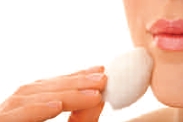In the natural realm, keeping up appearances isn’t about covering up. It’s about supporting the external with vital nutrients so that healthy, glowing skin, shiny hair and strong nails show through. Here’s everything you need to know about three hot and growing products categories that aim to do just that.
2013: Year of the BB Crème
BB. CC. Nope, this isn’t an alternate way of reciting the alphabet. It’s one of today’s hottest skincare crazes. BB crèmes (which could stand for several things, including beauty balm or blemish balm) have gained some serious traction in 2013, with several big launches in both the conventional and natural markets.
While somewhat new on the American market, BB crèmes have been sold overseas for years. A German dermatologist invented them as a way to give laser treatment patients a single product that could protect the skin (1). The trend caught on big time in South Korea, then all over Asia and now in the United States, where the market is just one to two years old.
According to Tim Schaeffer, senior vice 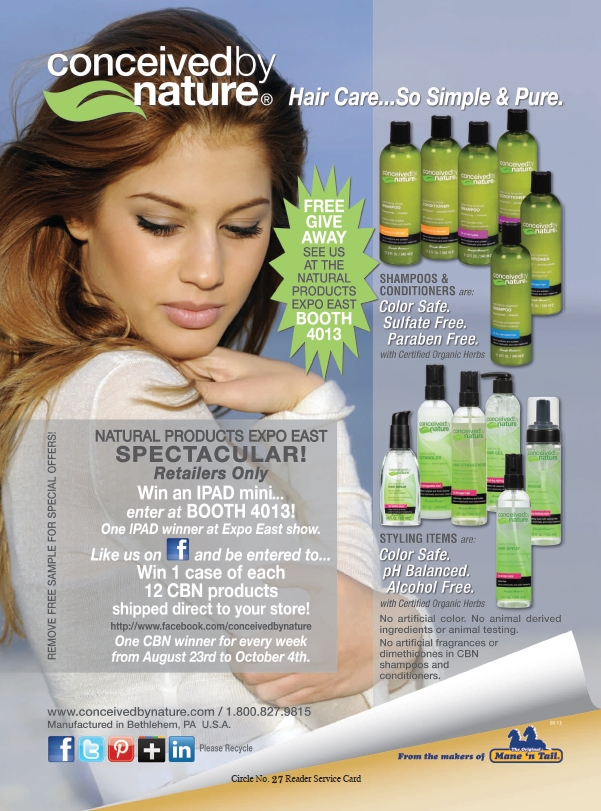 president of marketing for Mineral Fusion Natural Brands, Petaluma, CA, the BB trend is all about letting women multitask with their skincare routines. “We’re all tasked with doing more within the same amount of time,” he states. “BB crèmes offer a way to shorten the morning skin regimen by combining cosmetic and skin care needs.”
president of marketing for Mineral Fusion Natural Brands, Petaluma, CA, the BB trend is all about letting women multitask with their skincare routines. “We’re all tasked with doing more within the same amount of time,” he states. “BB crèmes offer a way to shorten the morning skin regimen by combining cosmetic and skin care needs.”
These skin-matching formulas are far more than just tinted moisturizers. “BB crèmes resonate so strongly with consumers because they offer so many skincare and cosmetic crossover benefits in one,” states Jennifer Norman, vice president of marketing at derma e, Simi Valley, CA.
The versatility these products offer busy women—and the United States has quite a few of those!—includes combinations of moisturizer, primer, sun protection, skin treatment, concealer and foundation (1). CC crèmes (or color control) step it up in the correction department. Schaeffer tells us that shoppers shouldn’t expect a heavy foundation look with BB crèmes; rather, they even out skin tone. “The coverage is such that it’s ultra-sheer so that it works with all skin types.”
Stephen Matt, CMO of Own Skin Health, San Francisco, CA, explains how this might be achieved with a natural, mineral product: “To conceal, BB creams might use light-diffusing minerals. These minerals also provide some sun-protection as they physically block the sun’s rays from contacting the skin. Any dry oil would also be a good candidate as it could act as a primer to smooth out the skin.”
You can market BB crèmes as not only a time saver and streamlined product, but also as an economical choice. States Norman, “Given that most Americans today have strained wallets and strained time, anything that can help streamline the basic beauty routine will be in hot demand.”
Matt adds another unique benefit: coverage for now and improved skin appearance over time.
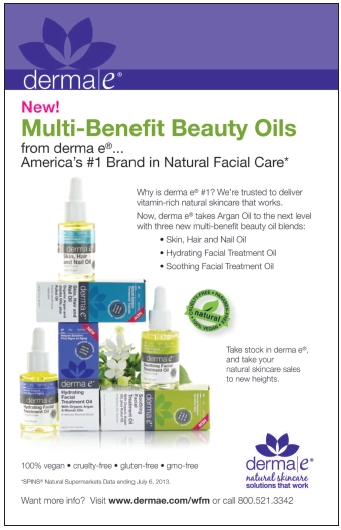 So, how is this accomplished? The derma e BB Crème formula, Norman reports, contains several natural compounds including antioxidant botanicals (green tea, olive, grape seed), moisturizers (olive, safflower), skin soothers (licorice, willowherb), skin brighteners (madonna lily plant stem cells, bearberry) and mineral pigments for a natural tint.
So, how is this accomplished? The derma e BB Crème formula, Norman reports, contains several natural compounds including antioxidant botanicals (green tea, olive, grape seed), moisturizers (olive, safflower), skin soothers (licorice, willowherb), skin brighteners (madonna lily plant stem cells, bearberry) and mineral pigments for a natural tint.
Meanwhile, Stacey Kelly Egide, CEO of Andalou Naturals, Novato, CA, says her company’s BB Beauty Balms incorporate fruit stem cells—another trend we’ve seen lately. The firm incorporates apple and grape stem cell cultures, which Egide says “advance the longevity of skin stem cells and help protect skin’s DNA against environmental stress and aging factors.”
“Think of beauty balms as action-packed superheroes with a unique combination of age-defying fruit stem cells, superfruit antioxidants, brightening vitamin C, mattifying oil-control, mineral-based tint and SPF protection and, of course, moisturizers, in one application,” Egide states.
And at Mineral Fusion, the focus is on a 100% mineral-based product. States Schaeffer, “Both the coverage and SPF protection are purely mineral based, which finally provides sensitive skin and naturally-oriented individuals an efficacious option.”
So whether customers want to simplify their skincare routines or save money, BB crèmes might be the right products for them, with benefits that range from treating blemishes to anti-aging to clarifying.
Beauty Oils: Best Practices
Beauty oils for skincare and haircare also appeal to shoppers for their versatility and nourishing nature. The right oil can hydrate any skin or hair type, adding softness to the skin and shine to the hair. Some are even known to help minimize the look of fine facial lines without adding greasiness.
|
Toners: Yea or Nay?
To conserve space in a crowded personal care section, some retailers believe toners should be the first products they should pull from shelves. But are toners really worthy of being the sacrificial lamb? Tim Schaeffer, senior vice president of marketing for Mineral Fusion Natural Brands, says they offer a true and meaningful benefit: “Toners are a great bridge between cleansing and moisturizing. They help provide the final touch in cleansing by removing the last of any residue and prep the skin for optimal moisturization.” Toners are food for skin, says Jim Fitzpatrick, owner of Moringa Source, and should be a part of everyone’s daily skincare regimen. “The skin is under attack every day from pollutants, sunlight and other environmental assailants and a quality toner replenishes lost nutrients throughout the day,” he believes. “Toners provide a way to rejuvenate skin during the day when it is needed most.” Since skin is increasingly subject to the effects of a shrinking ozone layer and extreme temperature variations, Peter McMullin, president of Sibu, LLC, states that toners are both “relevant and recommended. The key is in finding a toner that doesn’t dry out skin and cause further complications by promoting more oil production, and also one that helps to balance the body’s natural pH balance.” Also referring to toner’s role in balancing skin pH is information supplied by Reviva Labs. The firm explains that healthy skin naturally has a protective acid coating produced by sweat. An acidic skin surface is healthy and resists bacteria, but the balance can be upset after washing. Toner helps restore the balance. In addition, they help remove any residue left on the skin after cleansing. States Eileen Sheets, managing director of Bioforce USA, Ghent, NY, “This is usually important because any residue can interfere with how the product applied after cleansing works.” Though she notes that a line offered by her firm (Annemarie Borlind) doesn’t leave any residue, so a toner is not necessary after use. “But we do incorporate toners in our beauty routine as the first step in moisturizing, and preparing the skin for further treatment. Each toner is prepared to start meeting the needs of the specific skin type it is developed for.” If toners aren’t top-sellers for you, emphasize these benefits. In addition, Ashley Jantzen, national sales manager at Sibu, recommends that retailers merchandize all of the products from the same brand together for better visibility. “This not only allows the brand to stand out on the shelf, it also shows the customer other products that the brand offers,” she states. And when streamlining a skincare section, “it’s imperative to offer the consumer the products they need for a typical skincare regimen: cleanse, tone, moisturize,” Jantzen believes. Sheets goes so far as to say you could potentially sell just one line that is broad enough to work for everyone. “If you have various lines, you generally will have overlap or duplication of skin needs,” she believes. |
|
“Oil is the purest skin moisturizer: gentle, soothing, highly absorbent and completely compatible with your body’s natural chemistry,” states Stephanie Ritchie Logan, marketing project manager for W.S. Badger Company, Gilsum, NH. “Simple, whole, organic plant oils are packed with antioxidants, vitamins and nutrients, and are naturally good for your skin.”
Given these benefits, be sure to have a handle on the proper techniques for using skin and hair oils.
Applying Oils 101. First, Jim Fitzpatrick, owner of Moringa Source, Newton, CT, suggests retailers tell shoppers that a little goes a long way. He recommends “small amounts at a time, but repeated applications…Over-application can leave the hair or skin feeling greasy.”
The reason why is that high-quality oils are likely to penetrate the skin very quickly: “Quality oils will pass the dermal layer and also absorb into the skin and will usually absorb completely in minutes,” says Fitzpatrick.
The same is true of hair oils. Charlynn Avery, product expert and trainer for Aura Cacia, Norway, IA, recommends using a little oil on damp hair before drying and styling for shiny, nourished locks. Using too much can weigh hair down, however.
For those that want to use hair oils for protection before heat styling, Norman tells shoppers to “dispense a few drops into the palm of your hand, rub your palms together and then tousle through hair while it’s still damp. The longer and thicker your hair, the more you’ll want to use.”
Alternatively, Susan Griffin Black, founder and co-CEO at EO Products, Corte Madera, CA, says oils can work on dried hair as a conditioning method. “For hair care, the best time to apply for deep conditioning is before bed and/or an hour before cleansing/shampooing your hair,” she states. Norman says if hair is fine or has flyaways, use just a drop.
After a longer conditioning treatment, Ritchie Logan offers this suggestion for oil removal if hair is dry or damaged: “try applying shampoo to dry hair before stepping into the shower. Work it in as best you can then rinse out.”
If overnight use isn’t appealing, James Liu, president of SeabuckWonders, Chicago, IL, adds another technique: “Our Sea Buckthorn Berry Oil can be mixed with your shampoos to help moisturize the hair and scalp. It also can assist with reducing scalp flaking and inflammation.”
For the body and face, oils can be applied after a bath or shower when skin is damp: “Use a small amount and massage into face, neck and body,” Griffin Black advises.
Just a few drops massaged into skin, nails and cuticles can provide great benefit. Griffin Black says, “Oils are wonderful because they help to create balance, making dry skin less dry and oily skin less oily.” While this may seem counterintuitive, she says, “if you keep drying out your hair or skin to get rid of oil, it triggers your body to make more oil.”
Norman recommends applying one or two drops of the sheered oil over skin in sweeping strokes. “To treat localized dry patches, dab the oil directly onto the area then massage it in,” she says.
Another trick from Norman is to add the oil into your favorite lotion to boost the moisture: “Add a drop of oil per dollop of lotion, blend between your palms and then apply to skin as usual.”
For nail and cuticles care, she says an “at-home oil treatment is great for conditioning them to feel less brittle and look naturally healthier.” Norman recommends soaking your fingertips in warm water for four to five minutes and then massaging oil in while the nails and cuticles are still damp to help seal in moisture.
For those new to hair and skin oils, Avery offers this piece of advice: keep it simple. “Start with a single ingredient oil that matches your hair or skin type—this is crucial,” she advises.
Avery explains that it isn’t true that putting oil on skin or hair will make it greasy. Rather, a successful experience is more about the proper choice of oil and technique for using it. “It is about using the correct amount on skin that is clean and exfoliated or hair that is clean and free of product buildup,” she states, adding, “Work with that product consistently and pay attention to the feel of the hair and skin after use. Adjust to find the perfect fit.”
Another important tip for using oils is to understand that “all oils can cause staining, so use caution around clothing,” states Ritchie Logan.
For skincare, Avery suggests that skin be dry after putting on the oil (meaning it has absorbed into the skin) before going to bed or putting on clothing to prevent stains and damage to fabrics.
Griffin Black adds that women using oils overnight in hair can use a shower cap or towel over their heads to protect bed linens. She notes, however, “Most oils are absorbed into fabric and can be washed out, but it’s just easier if you cover your head.”
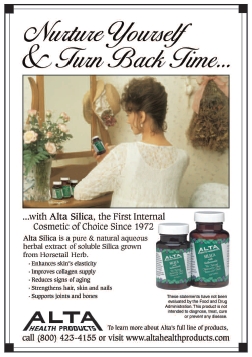 Griffin Black adds that oils with strong color like reddish-pink sea buckthorn oil may stain. To combat this, Peter McMullin, president of Sibu, LLC, Midvale, UT, suggests that one apply oil to hair 30–60 minutes before lying down at night to give it time to absorb into locks; he also recommends covering your hair or pillow with a natural breathable fiber cover like silk or cotton.
Griffin Black adds that oils with strong color like reddish-pink sea buckthorn oil may stain. To combat this, Peter McMullin, president of Sibu, LLC, Midvale, UT, suggests that one apply oil to hair 30–60 minutes before lying down at night to give it time to absorb into locks; he also recommends covering your hair or pillow with a natural breathable fiber cover like silk or cotton.
Type it out. Every oil is unique, and thus one may be better suited for one skin/hair type than another. According to Avery, different oils have different fatty acid compositions and vitamin contents. “They also have different weights, which will affect how quickly they are absorbed by different types of skin and hair,” she states.
All this means that various oils behave differently on hair and skin. “Some oils are very penetrative, do not remain on the surface and are ideal for carrying nutrients into the skin and hair,” says Fitzpatrick. “Other oils do not penetrate and remain on the surface and act as a moisturizer.”
Here is some advice for helping shoppers choose what’s right for them:
• Griffin Black recommends jojoba and grapeseed oils for oily skin.
• Those with normal skin may also benefit from jojoba as well as argan, avocado, meadowfoam, hemp seed and babassu oils, says Griffin Black. Egide adds some extra info on trendy argan oil, “[It’s] deeply moisturizing, rich in fatty acids (oleic, linoleic), nourishing and protecting,” she states. Fitzpatrick also believes in argan oil, and notes that it, moringa and olive oil are so beneficial because the oleic acid allows some constituents to penetrate while the longer-chain fatty acids remain on the surface for moisturizing.
• Try extra-moisturizing oils on dry or mature  skin, says Griffin Black, like olive, coconut, almond and sesame oils. A normal-to-dry skin recommendation comes from Matt, who believes dry oils like rose hip oil and grape seed oil help because they are packed with antioxidants and essential fatty acids, and they soak into skin without leaving a greasy residue. “The combination helps delay the effects of skin aging, promotes cell turnover and boosts collagen production for firmer, smoother skin,” he states. “In addition, it’s ideal for minimizing the appearance of scars, stretch marks, age spots and hyper-pigmentation.”
skin, says Griffin Black, like olive, coconut, almond and sesame oils. A normal-to-dry skin recommendation comes from Matt, who believes dry oils like rose hip oil and grape seed oil help because they are packed with antioxidants and essential fatty acids, and they soak into skin without leaving a greasy residue. “The combination helps delay the effects of skin aging, promotes cell turnover and boosts collagen production for firmer, smoother skin,” he states. “In addition, it’s ideal for minimizing the appearance of scars, stretch marks, age spots and hyper-pigmentation.”
• Ritchie Logan believes that since pomegranate and baobab are “light, super-absorbent, high in antioxidants and packed with vitamins” and jojoba oil “adds antioxidant benefits without being heavy,” a combination of these oils can be used on all skin types. Egide also likes pomegranate (a “soothing oil” that supports healthy cell membranes) and omega-rich flax, which is “essential for healthy skin.”
• So as not to weigh down oily or fine hair, Griffin Black suggests jojoba, argan or avocado oils.
• Those with normal or normal to dry hair may like coconut, argan or avocado oils, says Griffin Black.
• Dry, color-treated or chemically treated hair needs extra moisture, and Griffin Black recommends coconut, olive, argan, sweet almond and castor oils.
McMullin offers some advice for how to stock your shelves with beauty oils. “Oils that come from natural sources and do not contain any additives and are not purified (which is another word for multi-step processing) are generally recommended for all skin types,” he says, adding, “The key is to look for natural, cold pressed oils…the ones that are unrefined are the best.”
He also recommends the use of oils that don’t have emulsifiers, which let the oil mix with other ingredients. “This can oftentimes leave a film on the skin and hair, which, in addition to feeling sticky can additionally make water evaporate faster, robbing the skin of much-needed moisture,” McMullin believes. Instead, he feels 100% natural oils “deliver skin-soothing results and create a protective barrier against skin-damaging free radicals while helping to create a healthier balance on the surface and deep into the underlying layers of skin tissues.”
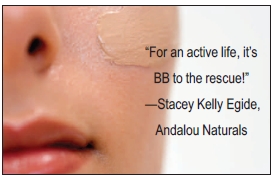 Butter it up. For shoppers who want the benefits of oil, but prefer a different delivery technique, body butters could be an option. “Body butters are made to cover the skin with a protective layer to keep the skin from drying out while keeping moisture in the skin layer from evaporating,” Fitzpatrick states. Unlike lotions and creams that often incorporate water, body butters tend to have only natural butters and oils without any water. “[They] provide nutrition to the skin while also delivering a daily dose of antioxidants,” he explains.
Butter it up. For shoppers who want the benefits of oil, but prefer a different delivery technique, body butters could be an option. “Body butters are made to cover the skin with a protective layer to keep the skin from drying out while keeping moisture in the skin layer from evaporating,” Fitzpatrick states. Unlike lotions and creams that often incorporate water, body butters tend to have only natural butters and oils without any water. “[They] provide nutrition to the skin while also delivering a daily dose of antioxidants,” he explains.
He explains that body butters tend to have a “luxurious feel” and a thick, butter-like consistency; when applied, they are said to stay in place for hours. “True body butters are never white, as oils and butter impart a wonderful golden yellow to the finished product,” Fitzpatrick states. “Ideal ingredients have a high concentration of oleic acid, a highly penetrative oil that acts as an emollient.” Examples of such compounds include moringa oil, argan oil, cacao butter, shea butter, coconut oil and mango butter.
Great Nails without Fail
Our nails take a beating every day, as we use them to scrub, scratch and pry things open. Now add in the use of chemical manicure products, and the situation becomes even worse. “Solvents from polish and remover extract the natural oils from the nail plate causing further brittleness, cracking and yellowing,” states Melanie Hurley, founder of Piggy Paint, Springdale, AR.
So, experts recommend some basics for optimal nail care, starting with the use of natural methods and chemical-free products.
For instance, Schaeffer suggests “Natural oils or a cuticle treatment to keep them in good shape.”
Liu agrees, suggesting that high-quality sea buckthorn oil (both internally through supplementation and topically for damaged nails and cuticles) offers great benefits: “It has a 1:1 ratio of omegas-3 and -6 along with omega-9. Taken systemically this will automatically repair and enhance the nails, hair and skin.”
McMullin believes so strongly in omega-7 derived from sea buckthorn that he calls it “imperative for the health of nails, along with also improving the strength and appearance of hair and skin tone/texture.”
Painting pretty. There’s a lot to learn about why painting nails should be a chemical-free endeavor. “We should avoid polishes that contain strong, smelly chemicals. If you can smell it, it most likely won’t be good for you,” Hurley states.
According to Liz Reyna, CEO and founder of ManiPure, LLC, Chicago, IL, some conventional polishes incorporate dibutyle phthalate (DPD), camphor, formaldehyde and toluene, “which causes headaches, fatigue and dizziness. Also, some polishes claim that they are formaldehyde free but still contain formaldehyde resin.”
She adds that while her company’s line is not entirely free of chemicals, it’s important to eliminate the most dangerous and toxic trio (DPD, toluene and formaldehyde, plus camphor and formaldehyde resin) of conventional nail polish ingredients.
These chemicals are harmful. States Hurley, “Traditional polishes almost always contain ethyl acetate and butyl acetate as the solvent, which are harsh chemicals that extract the essential oils from your nails leaving them dried-out, brittle and cracked.”
And when chemical solvents are placed on the nails, says Yingchun Liu, founder and chief chemist at Suncoat Products Inc., Guelph, Ontario, Canada, they can penetrate the body through damaged nails. She adds, “Acetate also generates toxic chemical fumes that are toxic to our bodies and pollute the air we breathe.”
What’s the alternative? Companies offer water-based polishes that are eco-friendly and practically odorless. Reyna adds, “These polishes are non-carcinogenic and will promote healthy nails.”
Some nail polishes (like ManiPure) are even packaged in bottles made from recycled materials.
Yingchun Liu says that there is some limitation with natural polishes in terms of variety. “When only using mineral pigments and natural colorants, there is some color limitation, such as bright yellow, red, etc. These are not always possible, but we can still create many, many vibrant colors that have wonderful depth because of natural minerals and colorants!”
Likewise, Schaeffer says his company “maximizes mineral content wherever possible,” and avoids shades typically associated with the harshest chemicals, such as neons or other special effects.
Another possible limitation is with vegan-friendly polishes, which, as Reyna points out, need to avoid pigments derived from silk or carmine. “Vegan polishes also do not contain pearl or guanine obtained from fish scales that might be in some metallic or shimmery polishes,” she adds.
But, don’t worry about not having variety for shoppers looking for great natural colors; companies have developed hundreds of vibrant colors that consumers love from pastels to bold shades.
Going, going, gone! Once a shopper is ready for polish removal, be sure to offer some alternatives to acetone removers. States Reyna, “One of the fastest ways to destroy your nails is to use acetone or an acetone-based nail polish remover. “ While acetone is fast and popular, “it makes nails brittle and can lead to dry and cracked nails.”
One alternative, according to Reyna, are moisturizing nail polish removers made with soybean ester. “After many requests from customers wanting a non-toxic nail polish remover, we launched this product (Soy Power) with great success,” she explains, adding that the remover works quickly and leaves nails moisturized. “This natural remover will prep the nail bed for a wonderful manicure without leading to unsightly cracks and dryness,” Reyna states. “It is quite a different experience to use a soy-based remover since it is oil based versus water based.”
Part of the “experience” is that after using the remover, Reyna says that cuticles feel as though they were treated with a cuticle oil. Another is that unlike acetone, it has a pleasant scent. She states, “Our non-toxic natural remover is scented with the essential oils of lavender and jasmine, is non-flammable and lasts longer than a water-based remover because it is so concentrated.”
Meanwhile, Yingchun Liu suggests corn-based removers, or those that mix corn and soy ingredients. “The main natural ingredients are corn-based ethyl lactate, and soy-based methyl soyate,” she states. “These are not drying to the nails, vegan and biodegradable.”
Hurley also prefers removers that incorporate corn ingredients, which compared to acetone, is low odor and eco-friendly, she feels.
Discolored nails. According to Diana Ramsay, founder of Citrusway, Pompano Beach, FL, 7–18% of Americans have nail fungus damage and discoloration, which looks like dry, brittle, thick and broken nails. She states, “These estimates are very conservative because the causes are so common: systemic Candida, diabetes, trauma to the nail (dropping something heavy on it), athletes who run long distances, wearing short or ill fitting shoes, contagions from nail tools, gyms, pools, use of artificial nail systems, use of antibiotics and other drugs, and more.”
Ramsay says people often suffer in silence because of embarrassment over this condition and she adds that treatments don’t always work. This could even be true of some natural remedies: “Even natural oils (like tea tree) feed many of the 100,000 strains of nail fungus and prescription drugs often do not work,” she states.
But, your store could be a resource for clients affected by this problem. Ramsay’s company, for instance, markets a natural product (Citrusway Nail Treatment) made of grapefruit seeds and pulp extracts that balances the pH of nails and supports healthy nail re-growth. “Citrusway works as an asphyxiant (it suffocates the fungus). As the strain is suffocated, healthy new nail growth appears so the consumer can actually see new nail growth within 7–10 days,” Ramsay says. WF
Reference
1. S. Levitt, “What Are BB Creams?” www.webmd.com/beauty/
makeup/beauty-balms-bb-creams, accessed May 18, 2013.
Published in WholeFoods Magazine, September 2013


